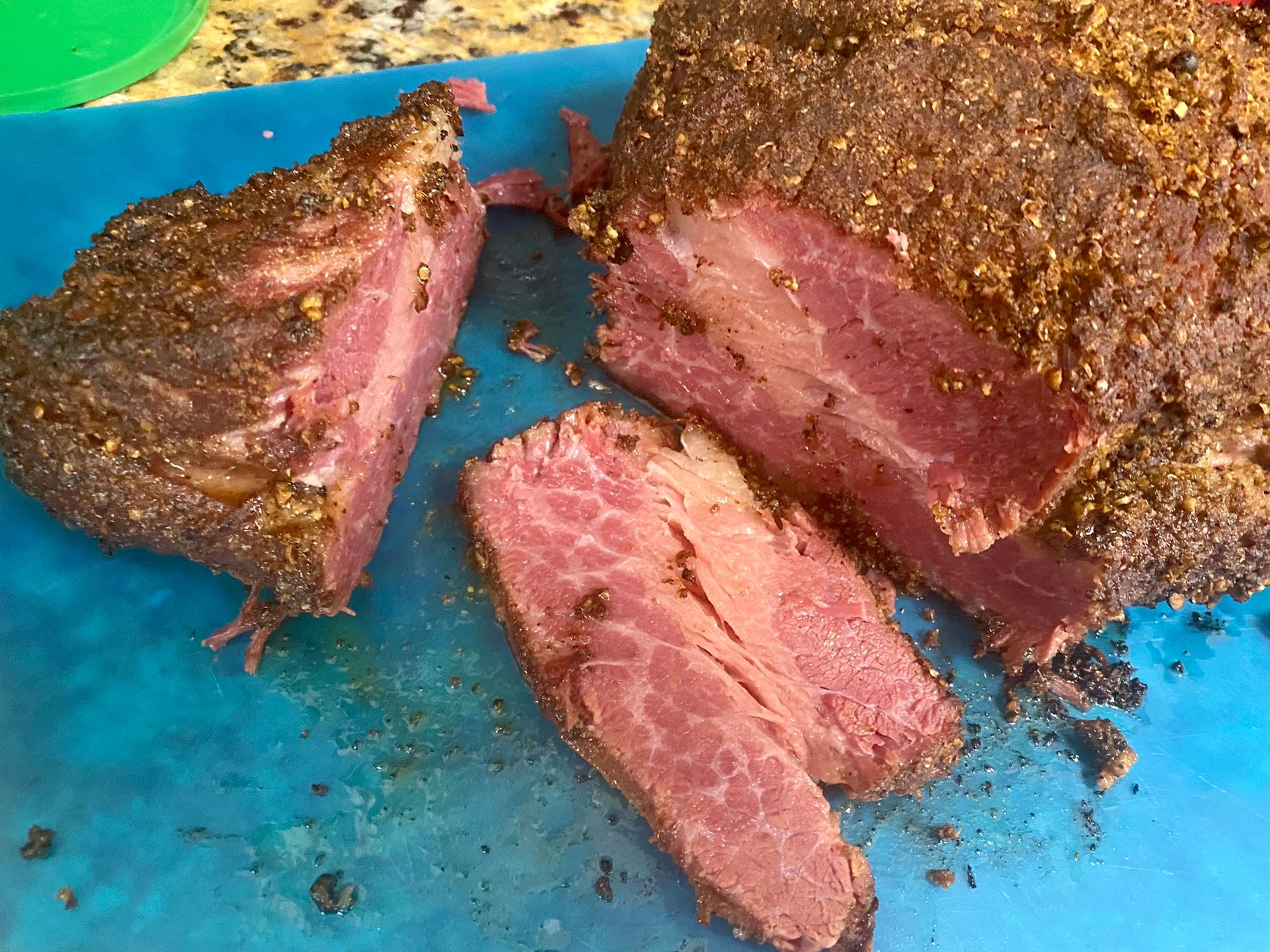How I Make Pastrami
My oft-requested recipe/method for making pastrami.
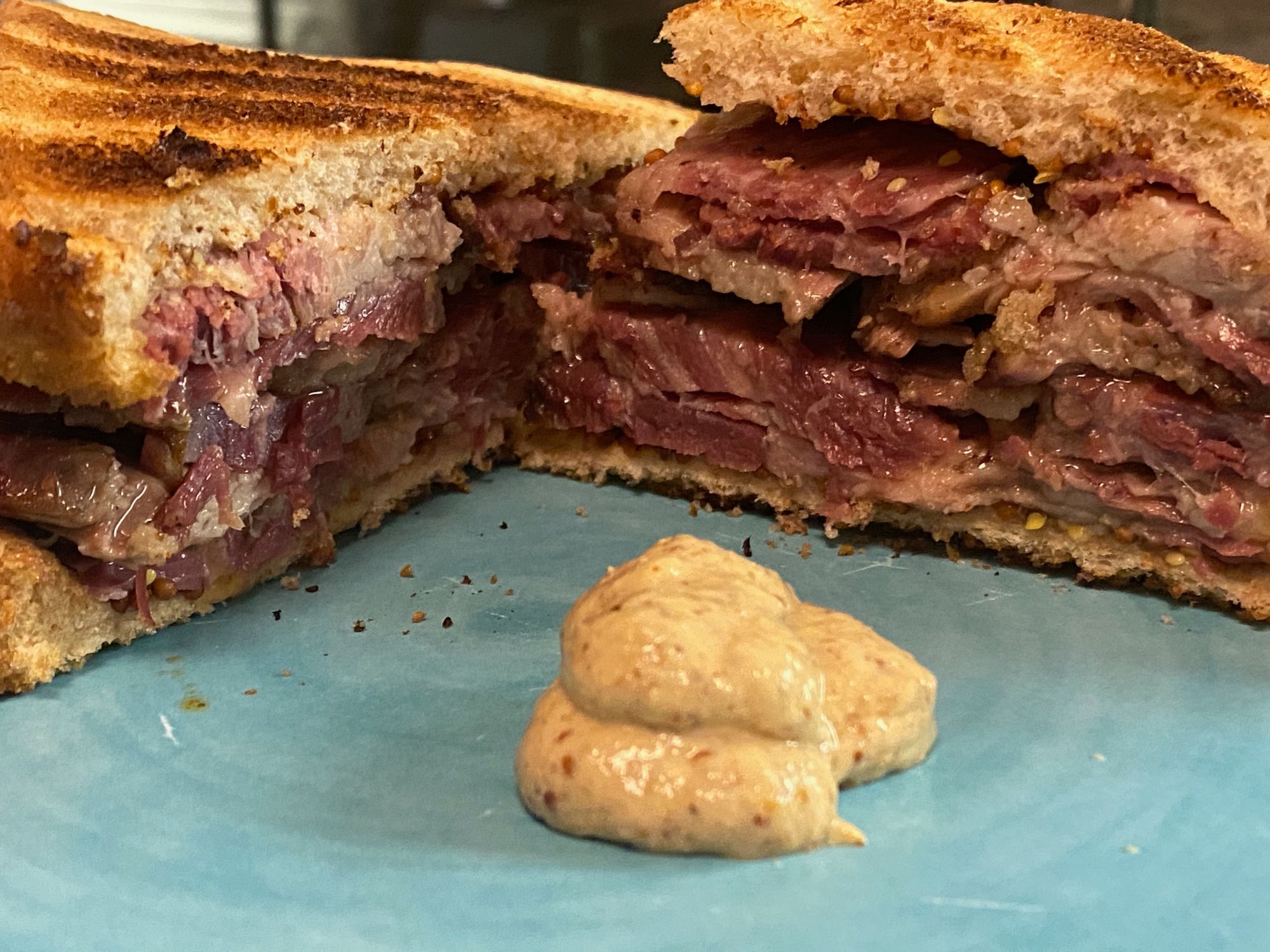
Preface
If I have seen further it is by standing on the shoulders of Giants
This method is an amalgamation of several methods and recipes. Most notably, I took information from ChefSteps, Serious Eats, and AmazingRibs, though there are certainly other sources that I reviewed for information and inspiration. This method is not strictly traditional or authentic. I encourage you to do your research and experimentation to come up with a recipe and method that works best for you.
Step 1 Corned Beef
You may skip this entire step by simply purchasing corned beef. A local deli, especially a Jewish deli, should be able to assist. I find grocery stores are hit-or-miss but will almost certainly have corned beef available in the week or so prior to St. Patrick's Day. If you've got the space, feel free to stock up - corned beef freezes well.
Step 1.1 Cure
The following measurements are for 5lbs of beef. Use whatever cut you like; it's going to cook so long that any cut will come out tender. If using a bone-in cut, try to scale such that you're leaving out the bones. If you're using brisket, use the weight after you've trimmed the brisket. A scaling spreadsheet may be copied from seemsgood.net/pastrami-scaling .
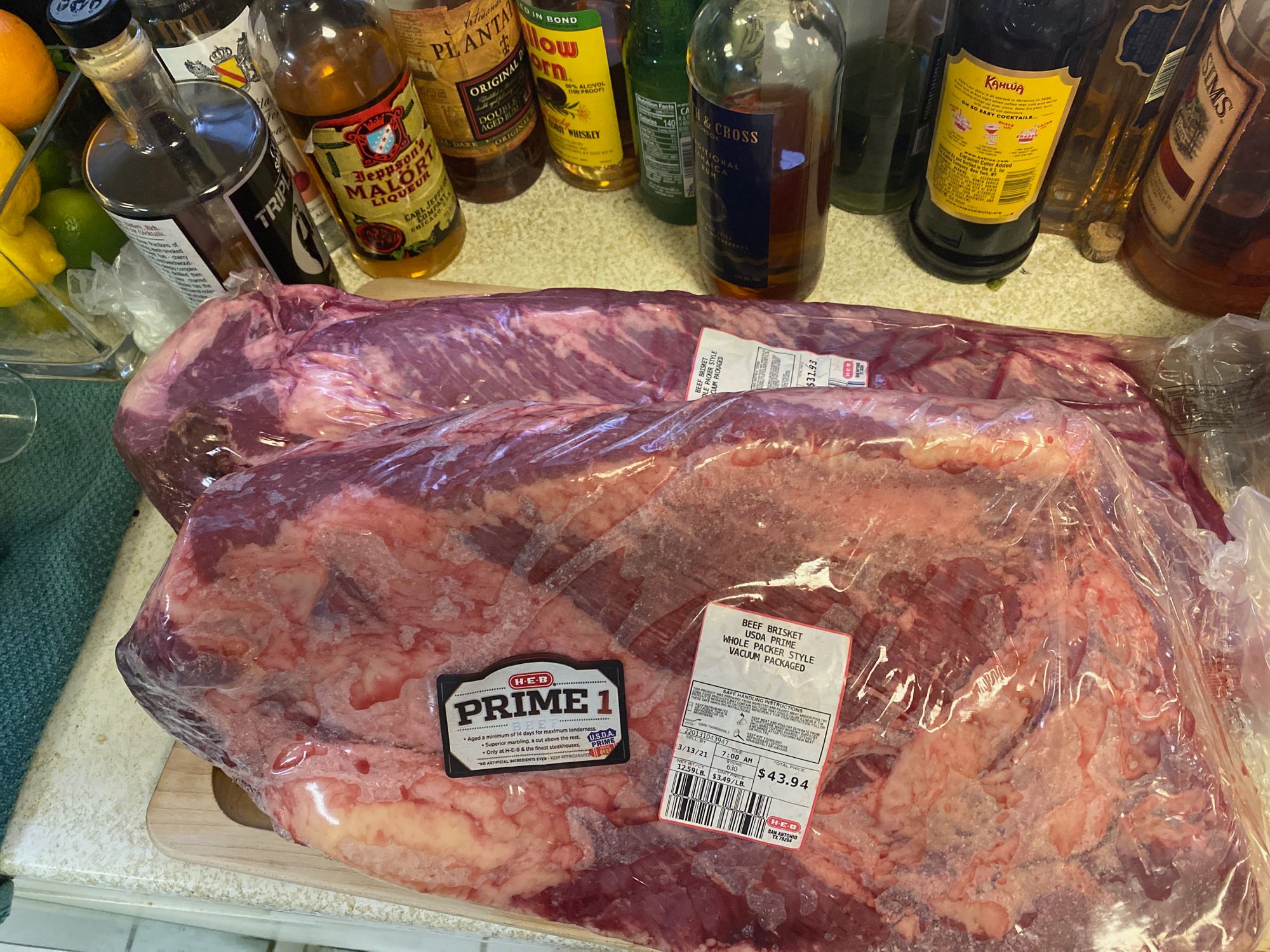
Traditionally, the cure would be done in a large volume of liquid. This method is more space efficient but requires that you be able to wrestle your beef into a vacuum bag. If you're doing brisket, I strongly recommend splitting it into the flat and point before curing.
If you have trouble finding pink curing salt (aka Insta Cure #1 aka Prague Powder #1) in the grocery store, check the hunting section of sporting stores. It's used for homemade sausage, so is often found with the processing gear. It may also be ordered in bulk from any number of sellers online.
Most kitchen scales are only accurate ±1.5g . If you're not making very much, I recommend getting an herb scale. You can probably save some money by getting one at a headshop instead of ordering online.
Cure
- 100g Kosher salt
- 10g Pink curing salt
- 30g Brown sugar
Combine cure and thoroughly rub all faces of the beef with cure. Add the beef to vacuum bag(s).
Spice Blend
- 2T Black peppercorns
- 2T Yellow mustard seeds
- 2T Coriander seeds
- 1T Allspice berries
- 1t Ground ginger
- 6 Cloves
- 6 Bay leaves, torn
Optionally crush all whole spices to maximize surface area. Distribute spice blend as evenly as possible in the vacuum bags. Seal vacuum bags.
Refrigerate beef. I recommend putting the bags on a rimmed baking sheet so that any bag failure doesn't flood your fridge.
Once or twice each day, massage the beef, try to even out the spice distribution, and flip. After a day or two, enough water will have been extracted from the beef that it will be easier to distribute the spices - this is why a super even coat in the previous step isn't crucial.
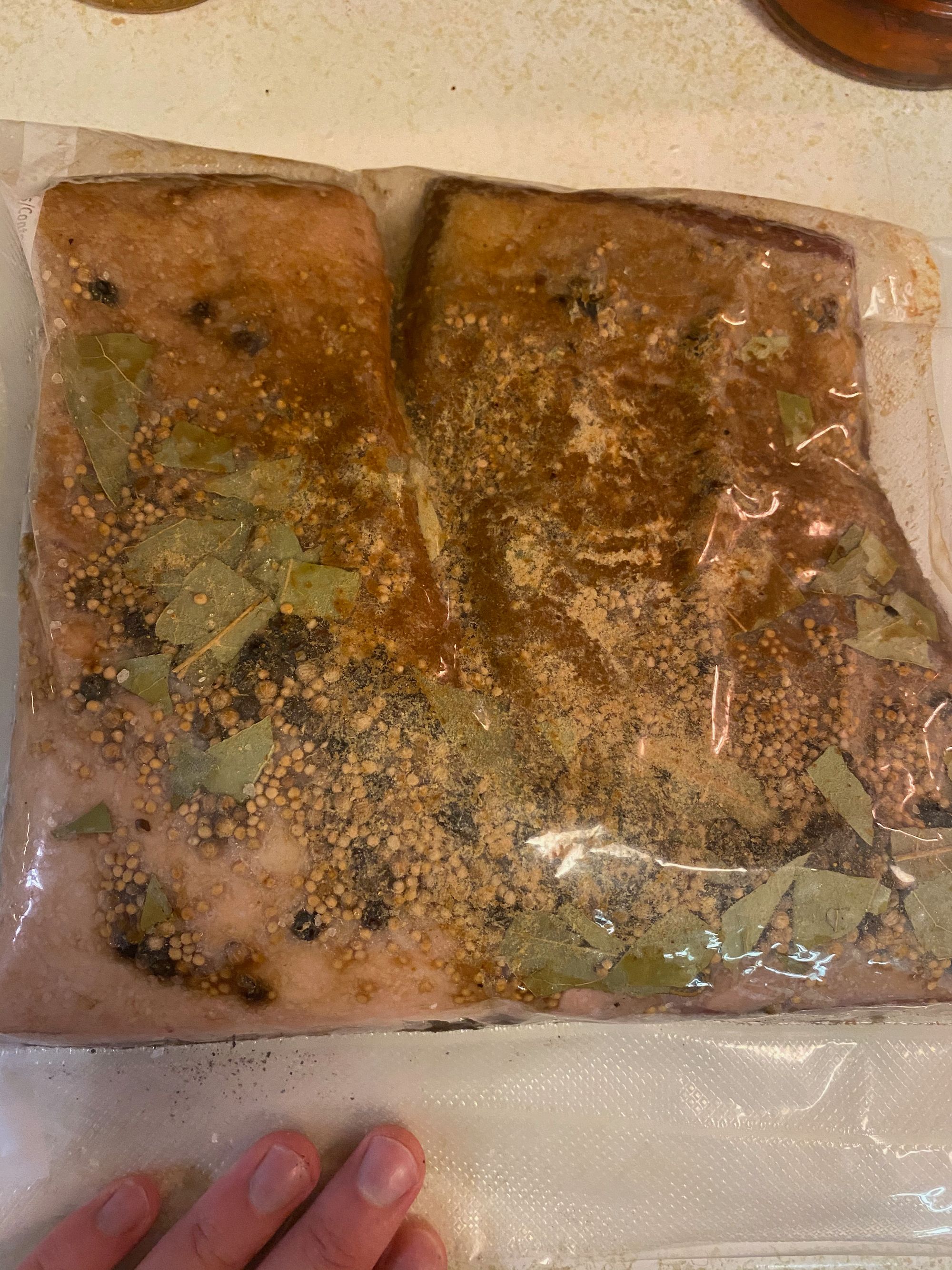
Exactly how long to cure will depend on your cut of beef. I've found that a brisket flat will be done in seven days and a point in twelve. You can remove the beef and slice into it to check - it will be obvious which spots the cure hasn't worked its way to yet. Leaving the beef in cure a few days longer than necessary won't have any negative effect that I've been able to detect.
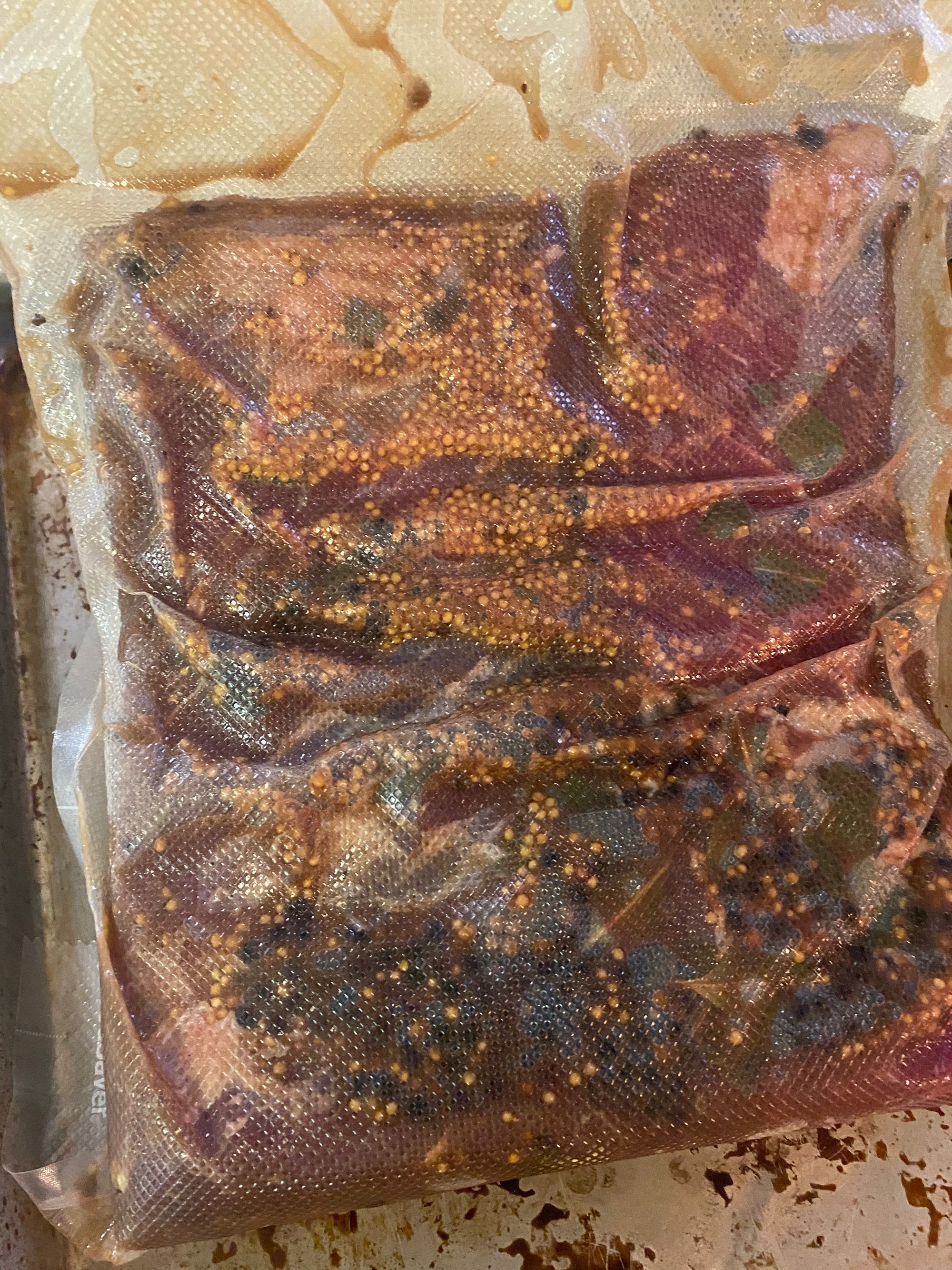

Step 1.2 End cure
Remove the beef from the vacuum bag(s). It should be noticeably firmer. Thoroughly rinse all surfaces of the beef until no spices are left clinging to it.
Do not do this step in your sink! Your disposal will almost certainly not be able to handle all those whole spices. I do the rinsing in a stock pot, occasionally straining out whole spices and refreshing the water.
Step 1.3 Cook the corned beef
Vacuum seal the beef into clean new bags. Cook sous vide at 150° F for 36 hours. Chill the beef all the way through. Once chilled, remove the beef from the bags and discard the liquid. You now have fully cooked corned beef.
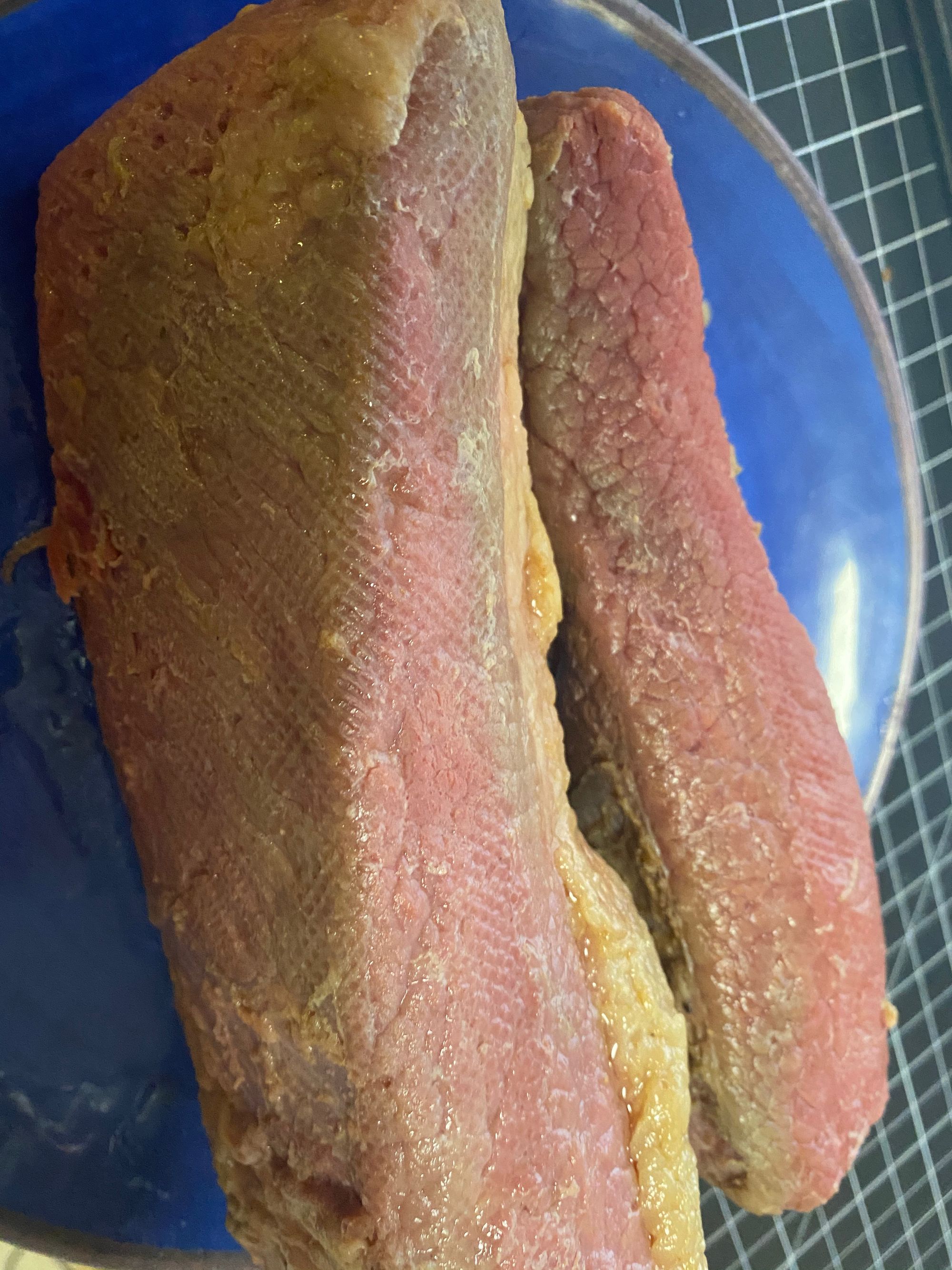
Some notes
As you're cooking for a long time, an insulated cooking vessel is a good idea. Covering the vessel is also a good idea to reduce water losses due to evaporation. At the end of the cook, a substantial amount of liquid will have cooked out of the beef, making those hot bags quite unwieldy, so be careful.
I do the cooking in a beer cooler. At the end of the cook, I can simply undo the drain plug, giving me access to the bags-o-beef without a bunch of hot water in the way. I then cover with a couple bags of ice to chill everything down.
If you're wanting to do some things well in advance, this is probably the best breaking point. The fully cooked corned beef will be substantially smaller than what you started with and it freezes well.
Step 2: Pastrami
Over two weeks into this process and you haven't even started making pastrami yet. Let's change that.
As with the corned beef measurements, this is based on 5lbs (precooked) beef. Scale accordingly.
Pastrami Rub
- 2T Black peppercorns
- 2T Ground black pepper
- 2T Garlic Powder
- 2T Onion Powder
- 1T Coriander seeds
- 1T Coriander powder
- 1T Brown sugar
- 1T Paprika
- ½T Yellow mustard seeds
- ½T Yellow mustard powder
Optionally crush all whole spices. Combine spice rub and thoroughly coat all surfaces of the beef. From fridge temp, smoke the beef at 225° F for 1-3 hours. Remember that the beef is already fully cooked; there's no need for a long smoke. The goal is to reheat the beef, develop smoke flavor, and bark.
Enjoy with grainy mustard, rye bread, and friends.

